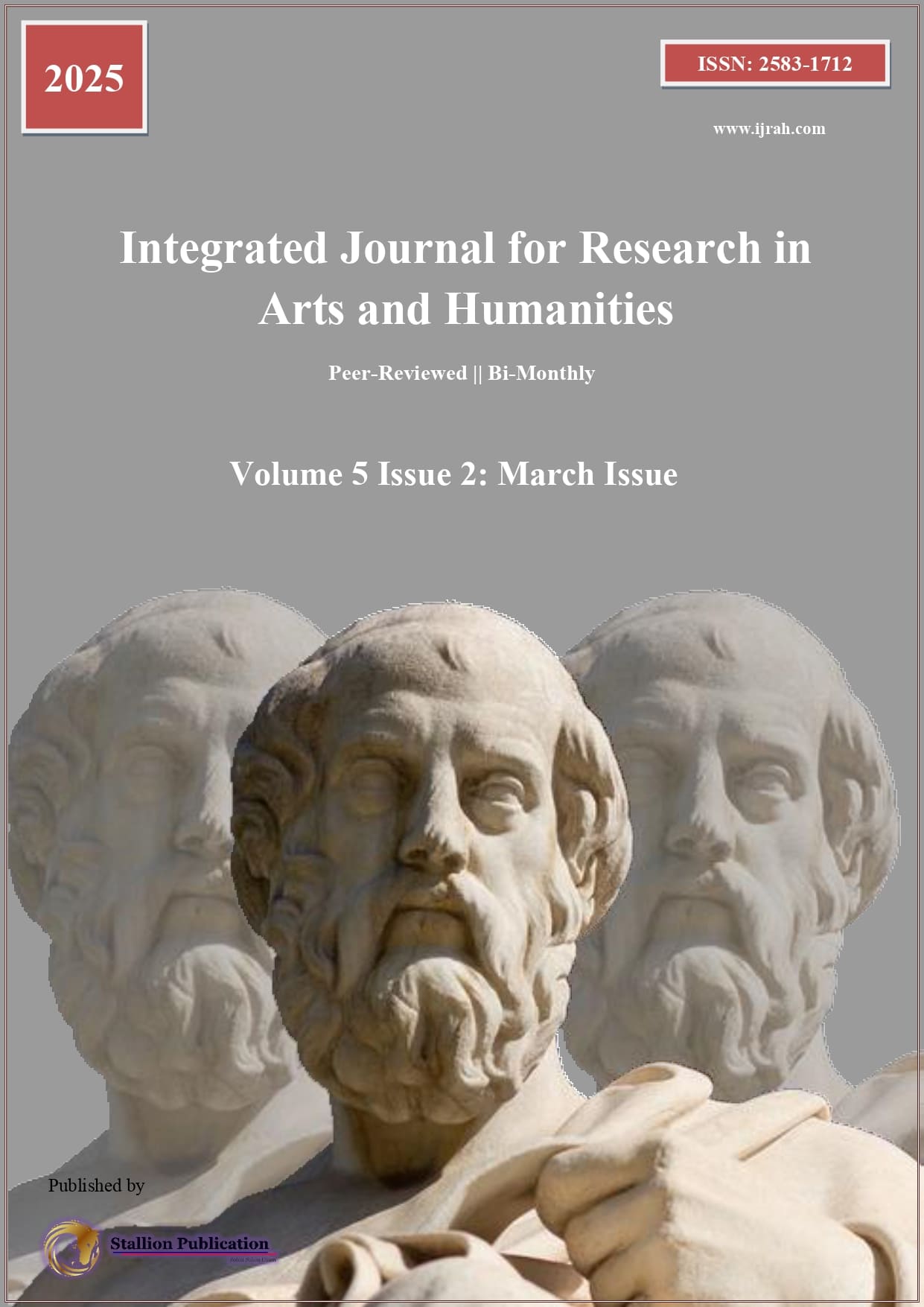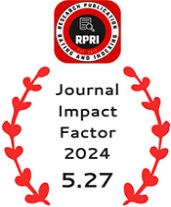Snake Worship in North-East India: A Historical Overview
DOI:
https://doi.org/10.55544/ijrah.5.2.20Keywords:
Snake Worship, Animistic beliefs, Devi Manasa, North-East IndiaAbstract
Snake worship, or Ophiolatry, has long been an integral part of the cultural and religious landscape of Northeast India, deeply embedded in the animistic beliefs of indigenous tribes that view snakes as divine entities symbolizing fertility, protection, and wisdom. Using textual analysis of historical literary sources and ethnographic accounts, this study investigates the intricacies of snake worship. The study places snake worship in its larger cultural context by critically analyzing the writings of authors like Hmingchhuan and Narayana. It illuminates the myths and historical narratives surrounding the practice. The paper synthesizes findings from various primary and secondary texts, including scholarly articles and ethnographies, to provide a comprehensive perspective on the significance of snake worship in the region. It emphasizes the role of literary references as crucial to understanding the nuances of the practice, while also recognizing gaps in existing scholarship that warrant further exploration. Drawing on historiographical insights from scholars like G. Ravindran Nair and Shanta Rameshwar Rao, this study advocates for a deeper investigation into the cultural relevance of snake worship and its implications for understanding local vernacular traditions. This research aims to enrich the discourse surrounding snake worship by employing textual analysis as its primary methodology, highlighting the potential for future studies in this vital area.
Downloads
Metrics
References
Barman, Sandipan. "14 Shaitol Bishohori: A Song Oriented Ritual in Rajbanshi Community of North Bengal." Society and Culture in India, vol. 1, no. 139, 2023.
Bhaumik, Rahul. "Indian Snakes and Snaky India: British Orientalist Construction of a Snake-Ridden Landscape during the Nineteenth Century." Rupkatha Journal on Interdisciplinary Studies in Humanities IX.2 (2017): 233-242. 28 12 2023. < http://rupkatha.com/V9/n2/v9n224.pdf>.
—. "Kashyapa Rishi of the Mahabharata becomes Dhanvantari Ojha of the Manasamangal Kavya: Transmission and Diffusion of an Ancient Snakebite-Curer’s Story." Bhatter College Journal of Multidisciplinary Studies VII.2 (2017): 10-17. Research Article. 09 05 2024. .
Biswas, Praggnaparamita. "Translating the Religiosity and Gender Politics of Manasa Myth in Contemporary Bengali Theatrical Narrative." Nidān 7.2 (2022): 66-84. Research Article. 09 05 2024.
Chakraborty, Adrija. "Unpacking the Manasamangal: A Study of Goddess Manasa Through the." Lapis Lazuli: An International Literary Journal 22.2 (2022): 1-7. 04 08 2024.
Deane, Rev John Bathurst. The Worship of the Serpent: Traced Throughout the World; Attesting the Temtation and Fall of Man by the Instrumentality of a Serpent Tempter. London: J.G & F. Rivington, 1833. Book. 09 06 2024.
Dimock Jr, E. C. "The Goddess of Snakes in Medieval Bengali Literature." History of Religions 1.2 (1962): 307-321. 28 12 2023.
Duli, Ete. "Making wonderous forms: Serpent imagery in the sacred landscape of early India, up to c. 500 CE." Animals in Archaeology: Integrating Landscapes, Environment and Humans in South Asia. Ed. Abhayan G.S., and Sharada Channarayapatna Pankaj Goyal. 1. Vol. 2. Kerala: Department of Archaeology, University of Kerala, 2023. 2 vols. 743-761. 29 08 2024.
Fox, Michael W. "Animism, Empathy, and Human Development." Between the Species 11.1 (1995): 130-141. 15 07 2024.
Gupte, Rukmini. "Remembering Manasa on Women's Day." Blog. Kolkata: Talking Myth Project, 1 March 2015. 21 10 2024. <https://talkingmyths.com/2015/03/01/>.
Garigliano, Irene Majo. "The Dreadful Dance of the Goddess." Cracow Indological Studies 20.1 (2018): 185-222.
Jones, Gabriel. "Snakes, Sacrifice, and Sacrality in South Asian Religion." History of Religions 50.1 (2010): 307-321. 28 12 2023.
Kasarabada, Nageswara Rao. "A study of nagas in Hinduism and Buddhism with special reference to ancient literature and art." Ph.D. Thesis. 2016. 29 08 2024. <http://hdl.handle.net/10603/269444>.
Mahendra, B. C. "The Snakes of India: A Historical Review." Current Science Association 4.6 (1935): 422-427. 28 12 2023. <https://www.jstor.org/stable/24204192>.
Morgan, Diane. Snakes in Myth, Magic, and History: The Story of a Human Obsession. USA: Bloomsbury Publishing, 2008. 18 06 2024.
Mundhenk, Kent. "Common Threads of Animism." Melanesian Journal of Theology 22.1 (2006): 6-16. 14 07 2024. <http://www.atla.com/>.
Prabhakar, Pawar, et al. "Diversity and Distribution of Snakes in Adjoining Areas of Panvel, Navi Mumbai, West Coast of India." International Journal of Zoological Investigations (2020): 289-300. 29 08 2024.
Read, Carveth. "Psychology Of Animism." The British Journal of Psychology VIII (1).1 (1915): 1-32. Journal Article. 18 07 2024.
Richardson, William Richley. Ophiolatreia: DEVELOPMENT OF SERPENT WORSHIP. San Francisco, California: Privately Printed, 1889. 01 06 2024.
Warburg, A. and W. F.Mainland. "A Lecture on Serpent Ritual." Journal of Warburg Institute 2.4 (1939): 277-292. 21 08 2019. <https://www.jstor.org/stable/750040>.
Yadav, Gaurav. "Mythical beings: Nagas The devas and asuras held one end each and churned the Ocean of Milk." 29 10 2023. The New Indian Express. 29 08 2024. <https://www.newindianexpress.com/lifestyle/spirituality/2023/Sep/30/mythical-beings-nagas-2619091.html>.
Downloads
Published
How to Cite
Issue
Section
License
Copyright (c) 2025 Animesh Manna

This work is licensed under a Creative Commons Attribution-NonCommercial-NoDerivatives 4.0 International License.

























